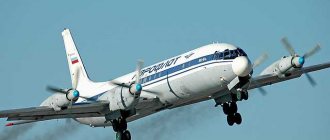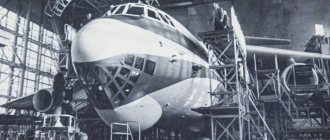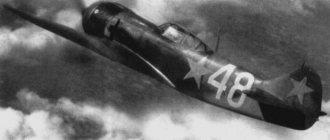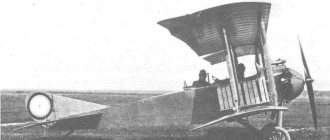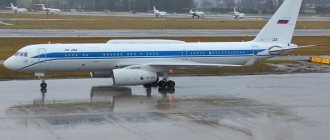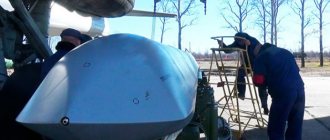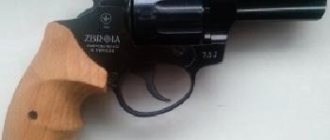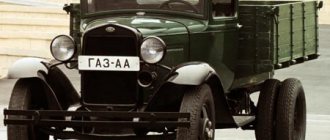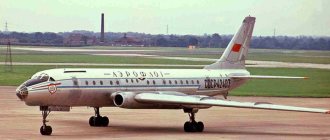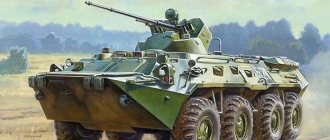The Lockheed SR-71 is one of the most famous reconnaissance aircraft and at the same time one of the most unknown. The Blackbird is the brainchild of renowned aircraft designer Clarence Johnson, head of Lockheed's Advanced Development Project (ADP). Designed in the late 50s, Blackbird still looks futuristic today, and this despite the fact that it was created not using high-speed computers, but on an ordinary drawing board.
Design
The SR-71 Blackbird is built in a tailless design with a delta wing and a twin-fin tail. The design is traditional - with stringers, frames and working skin. Carefully “slicked” shapes serve not only aerodynamics. “Invisible aircraft” created using Stealth technology are considered to be an invention of the last decade, but this technology is largely embodied in the design of the Blackbird. Rounded contours and smooth surface interfaces make the aircraft less visible to radar.
The strategic supersonic reconnaissance aircraft has almost no flat surfaces. The exception is the rather large keels, but they are inclined inward, which reduces their effective dispersion area. In addition, radio-absorbing materials in the form of triangular inserts of honeycomb plastic structures are used in the design of the leading and trailing edges of the wing. Thanks to this shape of the inserts, radio waves are reflected inside the triangle until they are completely attenuated. To top it all off, operating radio equipment distorts the signal reflected from the aircraft, confusing air defense radar operators.
During a long flight at supersonic speeds, the aircraft is subjected to strong and prolonged heating. Therefore, the Blackbird design consists of almost 93% of the high-strength and heat-resistant titanium alloy Beta B-120.
Main goals and objectives
The main direction of operation of the vehicle was reconnaissance, which it carried out using aerial cameras, a radar station (radar) and thermal imaging devices. In an hour of flight over the study area, it was possible to survey more than 155,000 km².
SR-71 Blackbird on a mission
The photographic equipment could take pictures within a radius of 150 km, the quality was very high, which made it possible to explore the territory of the Kola Peninsula without violating the borders of the USSR.
A serious drawback of the equipment was its blindness in cloudy weather. Poor visibility required searching for an open area in the clouds to film. In addition, the weather sometimes caused accidents. As a result, these aspects put an end to flights over European territory.
Fuselage
Considering that at speed the smooth wing skin panels warp and swell from heat, these elements were made corrugated. Longitudinal grooves not only act as stiffening ribs, but also increase the area of heat dissipation, almost without increasing resistance.
Many modern American combat aircraft have bulges on the wing roots, but on the Blackbird they occupy the entire length of the fuselage, which is why its cross-section turns from round to almost diamond-shaped. These bulges play a dual role: they create a very significant lifting force, which halves the bending moment on the long fuselage, and at the same time serve to accommodate fuel and equipment. In addition, they also work for aerodynamics, reducing drag.
The crew is accommodated in tandem cabins with separate rear-opening canopies. The cabin glazing of the Lockheed SR-71 model is made of special glass that does not transmit hard ultraviolet radiation at high altitudes. The cabins are equipped with air conditioning, and the crew flies in altitude-compensating suits.
still unanswered
The most intriguing question is what will the new miracle plane look like? The following pictures have been hanging on the corporation’s website since 2015 (we took one of them from other sources just for the sake of better resolution):
Picture: www.lockheedmartin.com
Picture: topwar.ru
It would seem that everything is clear: a businessman showed the goods face-to-face, and even if the goods themselves, the goods, do not yet exist, but futures transactions have long been a good global practice and there is no reason to doubt that the goods will turn out to be somehow different.
However, looking at the first pictures of the V generation ATF fighter, published in the early 80s, and at the “live” Lockheed Martin F-22A Raptor, you begin to doubt this. These doubts are aggravated by the cover of the children's magazine “Popular Science” with exactly the same aircraft shown right there on the Lockheed – Martin Corporation website, as if in mockery:
Photo: www.lockheedmartin.com
I'm sorry, I didn't understand: who is referring to whom?!
Question five:
Tail
The vertical tail unit is made all-moving. Such keels are 2.5 times more efficient than traditional rudders and require smaller deflection angles, which reduces drag. The maximum deflection angle of the Blackbird's fins at speeds up to Mach 0.5 is 20°; at higher speeds it automatically decreases to 10°. The keels are inclined inward by 15°, which has a positive effect on stability and controllability. For example, the supersonic aircraft SR-71 is not afraid of side winds up to 18 m/s. The trailing edge of the wing is entirely occupied by combined ailerons and elevators.
What kind of engine do you have?
Oddly enough, this is the only question to which Lockheed Martin seems to have no doubt about the answer. This is how the SR-72 power plant is presented on the corporation’s website:
The power plant of the SR-72 aircraft consists of two types of engines that provide three modes of operation. During takeoff and landing, only gas turbine engines are turned on - they are on top. The moving plates in the common air intakes and nozzles are lowered down and all the air entering the power plant goes through the upper channel. When supersonic speed is reached, the gas turbine engines are turned off, the movable plates rise, completely locking the upper channel from the front (“black zone” in the lower sketch), and the upper one remains open - it is believed that it does not create significant bottom resistance, although I personally do not understand why. At the same time, the ramjet located below, the air to which is already beginning to flow at a fairly high speed and is already compressed by the external shock wave on the air intake, is switched on to the first - supersonic operating mode. The device accelerates and when a sufficiently large Mach number is reached (at least 5.0?), the operating mode of the air intake and fuel combustion inside the ramjet changes. The main shock waves reduce their angles relative to the edges of the air intake and move inside it, the degree of air compression increases sharply, the temperature and combustion rate of the fuel increase and the place of the most intense reaction shifts back. At the same time, the amount of fuel consumed decreases, and air, on the contrary, increases, the mass and speed of combustion products thrown back increase, and the speed of the aircraft reaches the specified six “machs”, but maybe this is not the limit? If it is possible to organize stable and directional combustion of fuel in the external air flow flowing around the aircraft, then the thrust can be increased to simply fantastic values, and the speed will be not six, but eight, or even ten times the speed of sound! This drawing of the Lockheed Martin SR-72 aircraft power plant project was also posted on the corporation’s website, but in this source it turned out to be clearer. Drawing: cdn.shopify.com
Why can this particular part of the information provided by the company be trusted? Yes, because they do not contradict either physics or the direction of work that NASA and DARPA have been conducting for the last 15 years.
So, is everything clear?
Not at all. All that remains is to do this. I don't mean laboratory samples - they already exist! - but a full-scale aircraft with running engines. After all, there is always the possibility of failure, and then everything will have to start from scratch.
Question six:
Motors
“Blackbird” has two particularly powerful engines of the Pratt & Whitney JT11D-20B turbojet engine (another designation is J58) with a thrust of 144.56 kN. In them lies the secret of the Blackbird’s enormous range: at Mach 3, the motors essentially turn into ramjet engines: 58% of the thrust comes from the air intake, 25% from the nozzle, and only 17% from the engine itself. The Black Bird's air intakes were designed to provide a significant portion of the total thrust. The cones are made adjustable to keep the shock wave in the air intake.
When designing the J58 engine, Pratt & Whitney faced serious difficulties: the air intake temperature reached 380 °C, the fuel injectors - 160 °C, the afterburner - 280 °C, and the engine oil - 485 °C. Therefore, in the design of the J58, in addition to titanium, particularly heat-resistant nickel alloys Hastelloy-X and Rene-41 were used. Due to this intense thermal regime, the engines underwent complete disassembly and inspection every 200 hours of operation.
Chassis
The Blackbird's chassis is tricycle with a nose wheel. The nose gear with two wheels is retracted forward, the main ones - to the center. The landing gear is retracted immediately upon take-off as the Lockheed SR-71 quickly accelerates to its maximum speed limit with the landing gear extended (555 km/h). The main supports have three wheels on one axis to reduce ground pressure and at the same time save internal volume of the fuselage.
The tires are not made of rubber, but of a special heat-resistant material, and in order to maintain constant pressure in all flight modes, as well as to avoid oxidation, they are filled not with air, but with nitrogen. They have a smooth tread and are coated with silver paint to reduce heat build-up. The chassis wells are surrounded by fuel tanks - the fuel acts as a coolant.
Brake system
The reconnaissance aircraft is equipped with a single brake parachute with a diameter of 12 m, released using a squib immediately after touching the runway at a speed of 280-330 km/h. The parachute is made of a special heat-resistant material and made of mesh so that it is not torn apart by the high-speed pressure. It detaches when the aircraft speed drops to 110 km/h to prevent the halyard from getting tangled in the fins.
Specifications
Early stealth developments made it possible to obtain an aircraft that for years was inaccessible to aviation and missile defense systems. However, the cost of its operation was too high for the US Air Force.
TTX:
| Characteristic: | Meaning: |
| Ceiling, km | 25,91 |
| Flight range per refueling, km | 5230 |
| Take-off weight, t | Up to 78.02 |
| Maximum speed, km/h | 3300 |
| Range, m | 16,94 |
| Wing area, m2 | 141,1 |
| Length, m | 32,74 |
| Height, m | 5,64 |
Despite the outstanding performance, the aircraft periodically got into emergency situations. This resulted not only in the loss of expensive samples, but also of experienced pilots.
Equipment
US aviation uses the most advanced telemetry and control systems. The Blackbird is equipped with an eight-channel stability enhancement system (SMS), which compensates for the aircraft’s “built-in” instability (caused by uneven heating during cruising flight). The system operates on all three coordinate axes and is duplicated three times.
At speeds of Mach 3 and above, too vigorous actions by the rudders can lead to a sharp change in the aircraft’s position in space, and this can lead to its destruction. On the other hand, at the altitude at which the SR-71 Blackbird operates, the air density is less than 2% of its density at sea level, so a large deflection of the rudders is required.
The SPU was created by Honeywell and turned out to be one of the most reliable in the entire aircraft: its average time between failures is about 130,000 hours. If the system does break down, it is difficult, but not impossible, to control the aircraft in cruise mode.
Honeywell has also developed a flight data processing computer that corrects for distortions that occur during supersonic flight. Due to the strong rarefaction of air at high altitudes, conventional instruments with data input from PVD tubes were unreliable. The exact values of vertical speed, altitude and speed in Mach numbers were displayed from a computer on three digital displays in the cockpit.
History of the development of the SR-71 Blackbird reconnaissance aircraft
Since the mid-60s, Americans have periodically reported that strange phenomena often occurred in the clear sky: suddenly there was a noise, a blow, and then everything disappeared. The citizens of the country remained in ignorance until 1967, when isolated requests grew into mass complaints. Then the government of the country had to officially contact people with a message that all the phenomena were related to the testing of the Lockheed SR-71 Blackbird supersonic reconnaissance aircraft.
As a result, the Air Force had to compensate the people who filed a claim for a total of 35 thousand dollars.
The SR-71 Blackbird first flew in 1964. The aircraft became an alternative for the military, which needed a vehicle similar in performance to the A-12 - the CIA's supersonic reconnaissance aircraft. Initially, the aircraft was supposed to be used for reconnaissance over the territory of the Soviet Union and Cuba, but in 1960 the first U-2, the predecessor of the Blackbird aircraft, was shot down over the territory of the USSR. As a result, they decided to use satellites instead, and expensive planes began to fly over North Vietnam and Japan.
The designer of the A-12 (Clarence Johnson) was upset by this decision and began negotiations with the Air Force in 1958. The engineer tried to convince the military of the need to create an innovative aircraft that could simultaneously conduct reconnaissance and perform bomber missions.
SR-71 Blackbird and pilots before takeoff
For four years, the Air Force's top leadership ignored the requests until agreement was given to evaluate the mock-ups, which were already ready at that time. It was the R-12 and RS-12 that were smashed to smithereens by General Li Mei. According to him, the Blackbird was an exact copy of the XB-70 Valkyrie.
In fact, there were not many similar moments:
- purpose - both were reconnaissance bombers;
- both vehicles had the ability to refuel in the air;
- the maximum speed of the aircraft exceeded sound three times.
Otherwise, there was nothing in common either in appearance or characteristics. The Valkyrie, already in operation at that time, was almost twice as large, and was inferior in speed to the new product at 100 km/h.
That meeting became a serious controversy, and the heat of passion reached such a level that the US Department of Defense simply ordered work on both prototypes to stop.
The designer changed the abbreviation to Reconnaissance Strategic - strategic reconnaissance aircraft, and then continued development. The name became SR-71 as a result of a mistake by the president who announced the innovation.
The Lockheed SR-71 was the prototype for two vehicles of the same designer:
- A-12;
- YF-12.
The latter combined the capabilities of a reconnaissance and interceptor, and it was this that Johnson took as a basis for creating the Blackbird. It has become larger, and is considered one of the largest military aircraft in history. However, this did not prevent it from becoming on a par with the stealth stealth vehicles.
SR-71 Blackbird on a foggy runway
The take-off weight of the YF-12 prototype reached 57.6 tons, and that of the Black Bird increased to 78. It was difficult to lift the huge mass into the air, so the reconnaissance aircraft took off with a minimum fuel supply, after which it refueled in the air 7.5 kilometers from the converted KC -135 Q. Without replenishing the fuel supply, the plane could stay in the air for no more than an hour and a half, during which time it was possible to fly no more than 5230 km. The main problem with the whole process was the high cost - one lift with refueling cost $8 million.
The history of the unique vehicle ended in the fall of 1989, when it was finally decided to be withdrawn from service.
Several factors are cited as the reason for this:
- The Soviet Union acquired MiG-31 fighters, which could successfully push the “Black Birds” out of the explored territories;
- The USSR now has Krug complexes capable of destroying aircraft at maximum altitudes and speeds that the American reconnaissance aircraft developed.
To be fair, it should be noted that not all SRs are now in museum hangars. Several objects were transferred to NASA, which used the engineers’ work for its projects.
Fuel system
The intense and prolonged heating of the Lockheed SR-71 aircraft during cruising flight required the development of new fuels and lubricants, sealants, hydraulic mixtures, insulating materials, etc. Thus, the fuel used in the Blackbird, grade JP-7, has such a high temperature flashes that it had to be set on fire with a special reagent - triethylborane (TEB). Due to this, it is used as a coolant to cool the cockpit and the most sensitive components to overheating, especially the landing gear. But as the fuel was used up, uneven heating of the fuselage began, which caused deformation of its beads.
A special tank on the plane contains a supply of triethylborane to start the engines in the air and turn on the afterburner. The strategic reconnaissance aircraft is equipped with six fuel tanks that can hold 46,000 liters of fuel. The tanks are integral, their upper and lower walls are formed by the skin, and due to the systematic expansion and contraction of the airframe during heating and cooling, they crack. Every 200 flight hours they are sealed, but the tanks still leak, and entire puddles of fuel accumulate under parked aircraft. Since JP-7 fuel is non-volatile, there is virtually no fire hazard, but during cruise the tank walls heat up to 280 °C, so even JP-7 fuel with its high flash point can explode. Therefore, during flight, the tanks are filled with nitrogen.
Elusive
Military aircraft play an important role in modern combat strategy. Despite major powers' impressive constellations of tracking satellites, air power is still important for reconnaissance missions. Perhaps the Blackbird is the most legendary reconnaissance aircraft.
Having visited all the “hot spots” of the world, the SR-71 was never shot down. In 1972, the military magazine Ramparts quoted a former Air Force sergeant working for the National Security Agency as saying, "It's impossible to shoot down an SR-71." The sergeant cited cases where the Chinese tried to do this, but the pilots of the alerted MiG-21 interceptors could only wonder where the intruder had disappeared to. According to him, Blackbirds also flew over Soviet territory, and NSA listening stations along the borders of the USSR recorded the reaction of Soviet air defense. Moreover, the former sergeant said that US electronic intelligence equipment allowed them to monitor the flights of almost all Soviet military aircraft and even determine who was currently piloting a particular machine. And this is a considerable merit of the “seventy-first”.
Throughout the 70s, American planes flew over North Korea, China, Cuba, and along the borders of the USSR. At the same time, there were meetings with the fastest Soviet interceptor at that time - the MiG-25P, and they ended, according to the Americans, not in favor of the latter. Attempts to reach the elusive “guest” with the latest anti-aircraft missiles at that time were also unsuccessful.
Operation of the SR-71 Blackbird
The reconnaissance aircraft first flew on March 21, 1968 from a base in Okinawa. This model became a record, as it subsequently flew the most hours - 2981 over 942 flights, a quarter of which were combat missions.
MiG-31 is a plane capable of reaching the SR-71
Until 1970, Drozdys made flights once a week, then twice a week. Since 1972, aircraft have explored the area almost daily.
Two cars were lost in 1970 and 1972, but mechanical faults were to blame. During the entire period of use of the SR-71, not a single Vietnamese air defense aircraft was shot down, despite more than 800 missile launches.
Over the Eurasian continent, cars appeared on two routes:
- Over the Baltic Sea;
- Along the western coast of Norway and the Kola Peninsula.
For some time the aircraft were based on the Japanese Islands. Then they violated Soviet airspace every day, reconnaissance aircraft flew up to the border 8-12 times.
During the Yom Kippur War, Blackbird conducted reconnaissance operations over the territory of Syria, Egypt, and Jordan. The work made it possible to prevent a number of offensive operations by Egyptian troops.
The Krug complex is one of the likely reasons for the retirement of the SR-71
“Birds” were also used for peaceful purposes, in particular, to conduct research under the NASA programs: AST and SCAR. The first related to the development of promising supersonic technologies, the second - the development of a machine with supersonic cruising speed.
Lockheed A-12
The name "Blackbird" is most often associated with the SR-71 strategic reconnaissance aircraft. However, behind this name there are two more not so well-known vehicles: the A-12 and YF-12A.
The history of the appearance of these designations is quite interesting. It is known that US military aircraft have a clear classification. The abbreviation YF denoted a class of fighters, in fact, the YF-12A was an experimental fighter. The letter A (attack) was assigned to attack aircraft, but the A-12 clearly does not look like an attack aircraft. This was done to confuse the intelligence of the USSR after a huge international scandal associated with the shooting down of an American spy plane over Sverdlovsk (Ekaterinburg). Then President Eisenhower promised Khrushchev not to use reconnaissance aircraft in the skies over the Soviet Union, but the Lockheed project was precisely focused on these operations. Formally, it was considered “civilian”, since it belonged to the CIA - not an army organization.
By January 1962, the A-12 prototype was ready for testing. After the first flights, it became clear that there were many flaws in the design. The power plant was especially annoying, as it required long and laborious adjustments to the air intakes. Despite this, the A-12 was put into production - the CIA urgently needed a high-speed reconnaissance aircraft to replace the outdated U-2. 14 copies were produced.
How to look and how to shoot?
The Lockheed-Martin website says that tests of the experimental HTV-2 vehicle collected data on three aspects of hypersonic flight:
- aerodynamics;
- aerothermal effects;
- control and navigation.
It is the latter that arouses my greatest interest. After all, they have flown at such speeds before, but along very simple trajectories and under the full control of external surveillance equipment. They watched, but if anything happened, they couldn’t help.
As we have already said, the surface of a vehicle flying at hypersonic speed in the upper atmosphere is highly ionized. Moreover, since such a device will be visible on the radar from many thousands of kilometers away, there is an idea to “hide” its exact location in a huge artificial plasma cloud, which will be created by a special on-board generator. Then the radar will see not a marking point, but a many-kilometer shapeless zone of space, and the homing head of an interceptor missile or air defense system will not be able to find its target in it.
This is, of course, very good, but there is a question: will the radio and optical systems of such an aircraft itself be able to “pierce” this “cloud”? After all, it is a powerful source of interference in the radio range, and what will be visible to the eye or camera “from the window” can be easily seen on numerous video frames taken through the windows of landing descent vehicles of ordinary spacecraft or shuttles. There is nothing visible there except a frenzied fire, and neither infrared, nor laser, nor any other optical imaging that exists today will help to discern what is down there on the surface of the Earth.
So is everything so hopeless?
Not really. Radio and television communications with astronauts at launch and landing are still operational, telemetry is received, but with distortions and losses of some information. They have been struggling with this problem for a long time, but it has not yet been solved. But the structure of the “digital packages” of navigation, reconnaissance and targeting data that the SR-72 will have to use is much more complex than those that the spacecraft usually exchanges with the Mission Control Center and communication stations during launch or landing.
But, perhaps, there is hope, since the Pentagon decided to spend money? Or just “the guys have a share too”?
In any case, for this fundamentally new reconnaissance and strike aircraft it will be necessary to create fundamentally new aiming, reconnaissance, navigation and communication systems - those that exist today will not provide a solution to the assigned tasks. Completely autonomous navigation, a kind of “thing in itself” on board the device and having no connection with the outside world, is suitable for a space or ballistic missile, but not for such an aircraft. There is nothing to say about reconnaissance and targeting - here the problem is visible, as they say, with the naked eye, and for this we need a system that is open “both outward and inward.”
Whether the developers will come up with such an “open system” is also an open question.
It is even more difficult to shoot from the side of such a device. I mean the process of actually separating the ammunition from the carrier and its correct exit onto its specified flight path to the target.
When the flights of the first American space shuttle Columbia began, there was a crazy idea to make it enter the atmosphere to an altitude of 50...70 km above Moscow with the opening of the cargo hatch and return to orbit. At that time, the most fashionable topic was the so-called “Star Wars” - the transfer of hostilities to outer space, where America had a decisive advantage over the USSR. At least, that’s what the subordinates of US President Ronald Reagan, who suffered from Alzheimer’s disease, thought.
The Space Shuttle aerospace aircraft created by the American corporation North American-Rockwell. This is so far the only hypersonic aircraft that has been used not only for experimental, but also for practical military and commercial purposes. It had a spacious cargo compartment, from which it was possible to launch satellites or missiles with warheads into orbit to destroy orbital and ground targets - however, it did not come to the latter. But the Shuttle itself was still more of a rocket or a spacecraft descent module than an airplane in the usual sense of the word Photo: i.ytimg.com
I don’t know if such a dynamic descent was carried out with entry into the dense layers of the atmosphere and re-entry into space on the Shuttle, but the hatch was definitely not opened in this mode. Otherwise, the fleet of these wonderful ships would have decreased even before the first Challenger disaster.
The latest Press statement states that the SR-72 will still receive strike capabilities. The above figure shows how much space the power plant takes up on it, with most of this volume being its “empty” channels. And the tanks are not shown in the figure - although it is said that the proposed method of creating hypersonic thrust is very economical, it’s scary to imagine how much fuel the SR-72 will need, for example, in order to take off, say, at Minot Air Force Base in North Dakota, “ unload" over... (You yourself understand where) and land, for example, at Kadena airfield in Okinawa. Any other options are not worth the expected costs.
Therefore, no one was surprised by the message that the aircraft’s armament would consist of small-sized hypersonic air-to-ground missiles. They are being developed under the High Speed Strike Weapon program, but others are also mentioned.
In particular, it is possible that the HAW – Hypersonic Aerodynamic Weapon project, which was banned under the START-2 treaty, will be revived. A small solid-fuel rocket hit a target with a beam of hypersonic rods made of a super-strong alloy. Contact with them should have caused the concrete in the thickness of the bunker protection to boil.
So, this missile will probably be hypersonic. But what kind of warhead will it have? It is possible that it will be nuclear. After all, you can’t place a lot of them on the SR-72, and there’s no point in placing a few of them. Only a “nuclear sledgehammer” can justify the expected costs. And at the same time solve difficulties with aiming in light of the navigation problems described above.
Seventh and final question:
Design Features
The Lockheed A-12 remained essentially experimental - it had many shortcomings that could only be eliminated by refining the design. Perhaps the main one is the enormous workload on the pilot, who, in addition to flying the plane, which in itself was not an easy task, had to manage numerous reconnaissance equipment.
The external features of the A-12 were a strongly pointed nose with straight edges of the front parts of the fuselage beads and a short tip of the latter. The main difference from subsequent modifications of the Blackbird was that it was single-seat. Behind the pilot's cabin there was a reconnaissance equipment compartment (the so-called Q-compartment), reconnaissance equipment was also located in the fuselage nozzles. With rare exceptions, the A-12 remained almost entirely unpainted - only the nose with the cockpit, the leading edges of the wings and the air intake cones were black.
Pros and cons of a reconnaissance aircraft
The car has many advantages; it could not have been otherwise with an aircraft that was decades ahead of its time. Effective collection of information made it possible to recoup the cost of the missions, but after the Drozd ceased to be vulnerable, it was abandoned.
There are also plenty of disadvantages, and they appeared at the test stage:
- The machine is very complex, which required numerous equally complex modifications;
- During operation, it is necessary to constantly carry out checks; literally 100-hour operation entailed checks that took 16 days for each aircraft, which were partially disassembled. This does not include the mandatory inspections that were carried out after each flight;
- Emergencies often occurred in the air, including deaths. However, many pilots were saved through the use of modern catapults.
As a result, the process of decommissioning began. There are currently 30 machines in museums.
YF-12A interceptor
He is a fighting offshoot of the Blackbird family. Main differences from spy planes:
- The YF-12A is equipped with a Hughes AN/ASG-18A fire control radar with an associated IR target search and tracking system.
- Armament: four AIM-47A (GAR-9) Super-Falcon air-to-air missiles.
- Behind the pilot's cabin, instead of the Q-compartment, there is a second cabin where the weapons operator was located.
In 1964, designer Clarence Johnson was awarded the Collier Award for Excellence in US Aeronautics. The Lockheed YF-12A presentation featured the aircraft painted black. Perhaps this is where their informal name came from - “Black Bird”.
End of an era
By the beginning of the eighties, the life of the machines was already running out, and maintaining them in flying condition became very problematic. The situation with the engines was especially difficult: the J-58 turbojet engine was discontinued in the late sixties, and although the engines undergo complete disassembly and inspection every 200 hours of operation, and overhaul every 600 hours, naturally they wear out. Spare parts for them were becoming increasingly difficult to obtain.
In the spring of 1988, US Air Force Secretary Edward Aldridge reported that the cost of maintaining a fleet of SR-71s was equal to the cost of maintaining two fighter wings. By that time, the number of vehicles in operation had been halved - from 12 to 6. In 1989, it was decided to remove the SR-71 reconnaissance aircraft from service. In the spring of 1990, the “seventy-first” were dismissed. Three vehicles were transferred to NASA's Dryden Flight Test Center as flying laboratories for research into supersonic flight. Of the remaining, at least six sides are mothballed and theoretically can, if necessary, be brought into flight condition.
